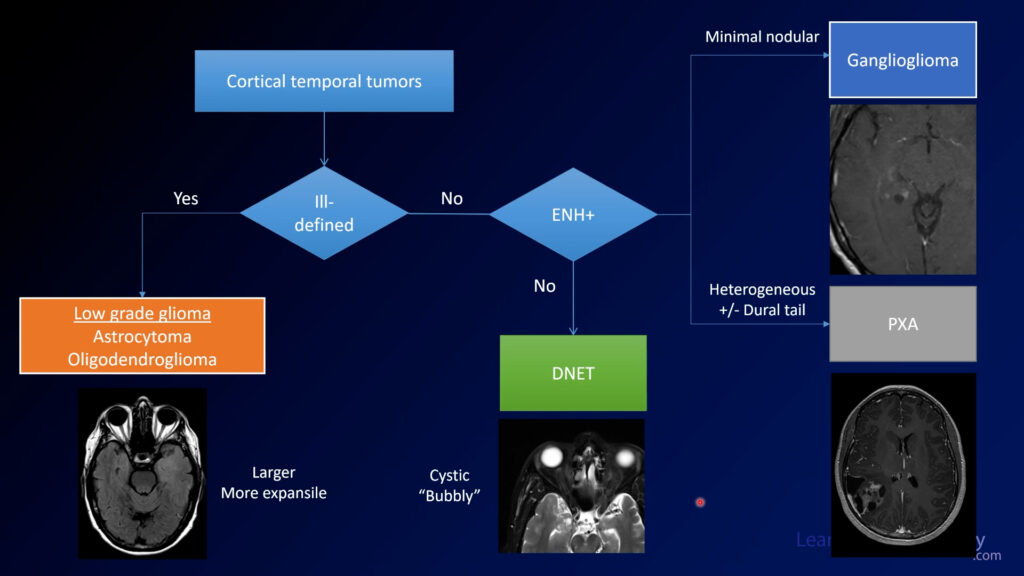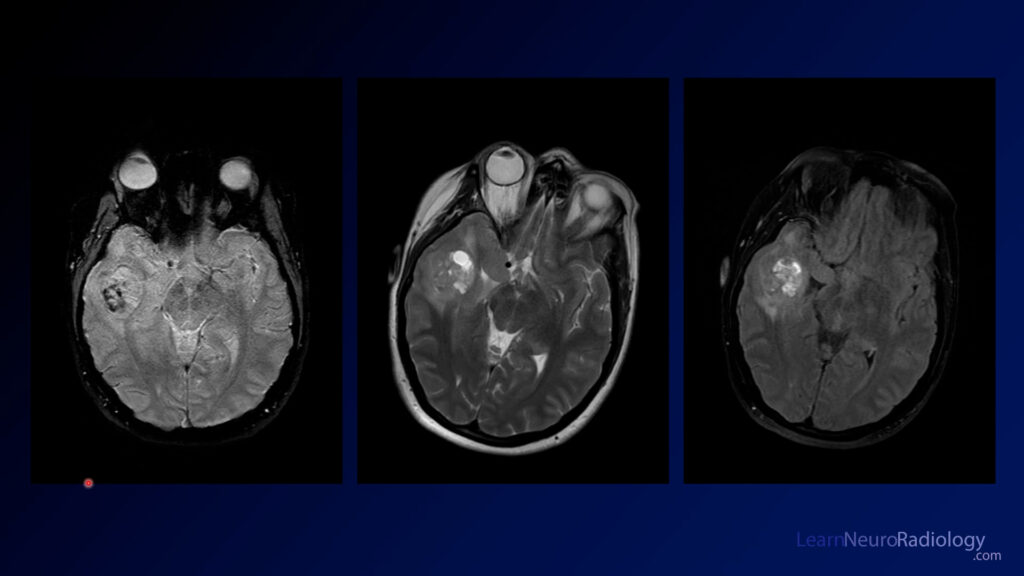Neuroradiology Board Review – Brain Tumors – Case 15
Neuroradiology brain tumor board review. This lecture is geared towards the ABR core exam for residents, but it would be useful for review for the ABR certifying exam or certificate of added qualification (CAQ) exam for neuroradiology.
More description and the answer (spoiler!) are seen below the video.
As we start this case, we see a brain and a bone window from a CT through the posterior fossa. It is a little bit hard to see because it is a midline abnormality. The sagittal and coronal reformats are helpful in identifying where the lesion is located.
MRI is a little bit easier to see the lesion, but only a little. There is a well-demarcated lesion along the inferior aspect of the 4th ventricle. There is calfication, which you could see both on CT and GRE sequences from MRI. On post-contrast imaging, there is little, if any enhancement.
The diagnosis is: subependymoma
Subependymomas are relatively benign tumors arising from the walls of the ventricles. In contrast to most other intraventricular tumors, they often do not have much enhancement. The most common locations are in the 4th ventricle and lateral ventricles. Many times they are incidental but they can cause symptoms related to hydrocephalus.
Your differential diagnosis for intraventricular lesions includes meningioma, ependymoma (more enhancing), choroid plexus tumors (also more enhancing), and other tumors such as subependymal giant cell tumors (SEGT, often seen in patients with tuberous sclerosi).
Some tumor types have characteristic histologies that you should be familiar with for the test. Ependymomas are associated with perivascular pseudorosettes, while other tumors such as glioblastoma have their own histologic keywords (pseudopallisading necrosis, microvascular proliferation). These are pretty low yield to study but if you see them it’s good to be familiar with them.


